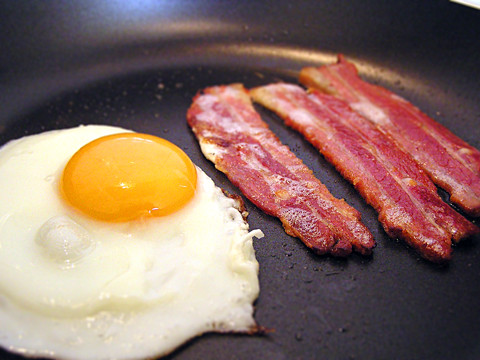The Effects of a High-Fat Diet on Health and Weight - Blood Test Analysis Part 1/2
It's been a while since I've had the chance to post, so here goes, finally. The last time I got so caught up in the mysterious world of cholesterol that I didn't even mention what my cholesterol levels were, even though I'd been waiting for the results for so long and so anxiously. Still, nevermind. Here they are:
LDL: 3 mmol/l
HDL: 2.24 mmol/l
Total: 5.7 mmol/l
Triglycerides: 0.92 mmol/l
The units are millimoles per liter, which apparently is the world standard unit for measuring cholesterol in blood. The US will have nothing to do with such standards, of course, so a conversion to mg/dl is in order:
LDL: 117 mg/dl
HDL: 87.36 mg/dl
Total: 222.3 mg/dl
Triglycerides: 81.88 mg/dl
According to the American Heart Association, the desirable level for total blood cholesterol is less than 200 mg/dl, which translates to 5.13 mmol/l. So, clearly my total cholesterol level is higher than what is said to be desirable.
The optimal level for LDL is less than 100 mg/dl (or 2.56 mmol/l), while the optimal level for HDL is more than 60 mg/dl (or 1.54 mmol/l). My levels exceed both.
Finally, the optimal level for triglycerides is less than 150 mg/dl (or 3.84 mmol/l). Mine are way below that.
So, my LDL and total cholesterol are higher than desirable, which may well have something to do with the fact that I've eaten ridiculous amounts of fat (both monounsaturated and saturated). Keep in mind, though, that when you're HDL levels are high, it raises your total cholesterol levels as well; thus, it is very possible to exceed the optimal total cholesterol level by having optimal levels of HDL. I haven't seen any upper limits for HDL before it becomes unhealthy.
Also, as I mentioned before, perhaps more interesting than HDL and LDL themselves is their relation: my LDL/HDL ratio is 1.33 and my total/HDL ratio is 2.54. Both of these numbers are associated with a low risk of cardiovascular disease.
As I've said, I don't necessarily hold these claims about optimal and unhealthy value ranges to be true, but hopefully this gives you some idea of how a high-fat diet relates to conventional wisdom on cholesterol.
Remember that the value ranges presented earlier are guidelines for Americans; the guidelines for Europeans are quite different. Every country has its own. For example, here's a comparison of the guidelines from US and Finland:
| US | Finland | |
| LDL | <100 | <117 |
| HDL | >60 | >39 |
| Total | <200 | <195 |
| Trig. | <150 | <78 |
As you can see, the recommended levels for HDL and triglycerides show considerable variation.
Go to next post on this experiment









0 kommenttia:
Post a Comment